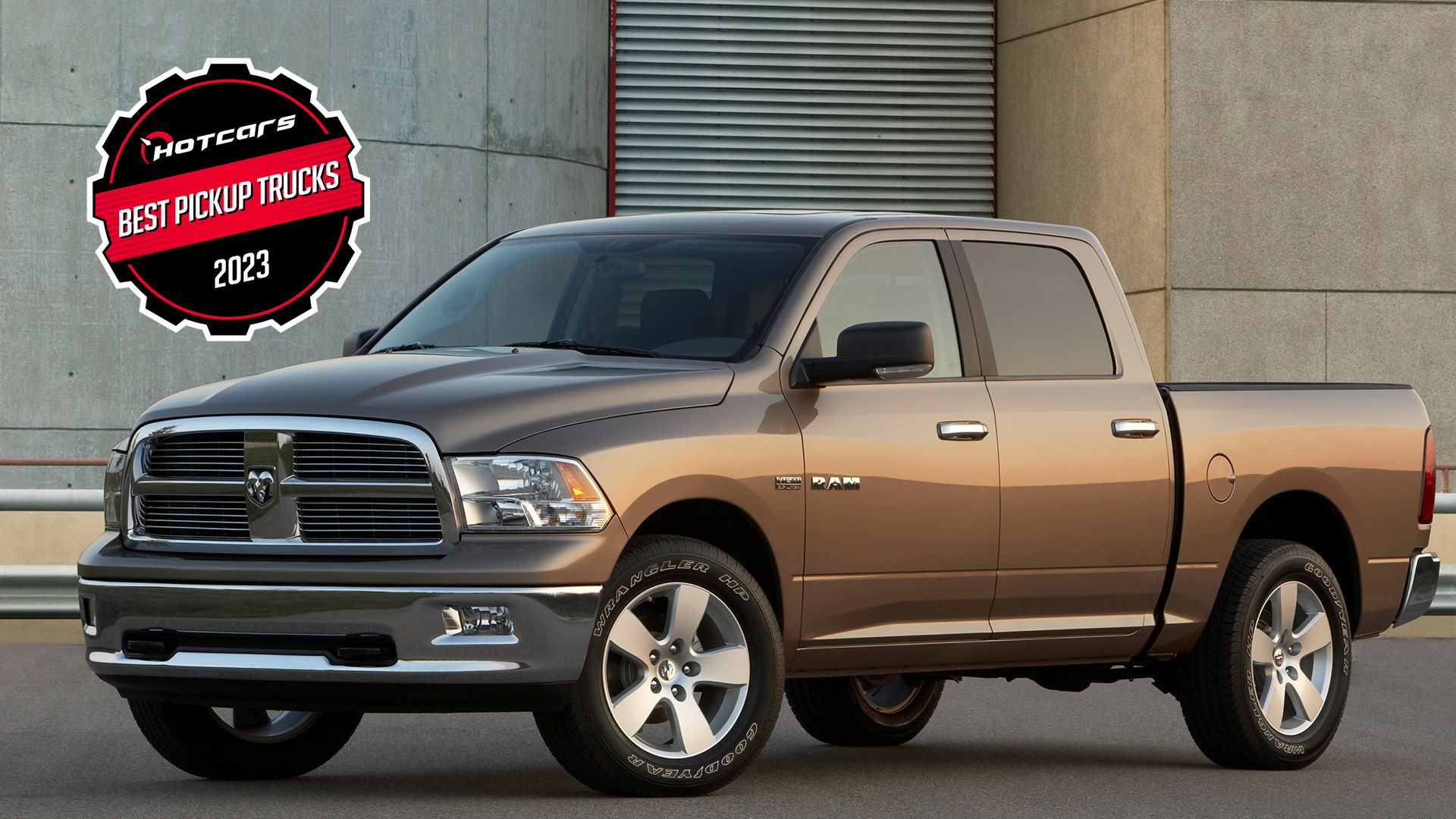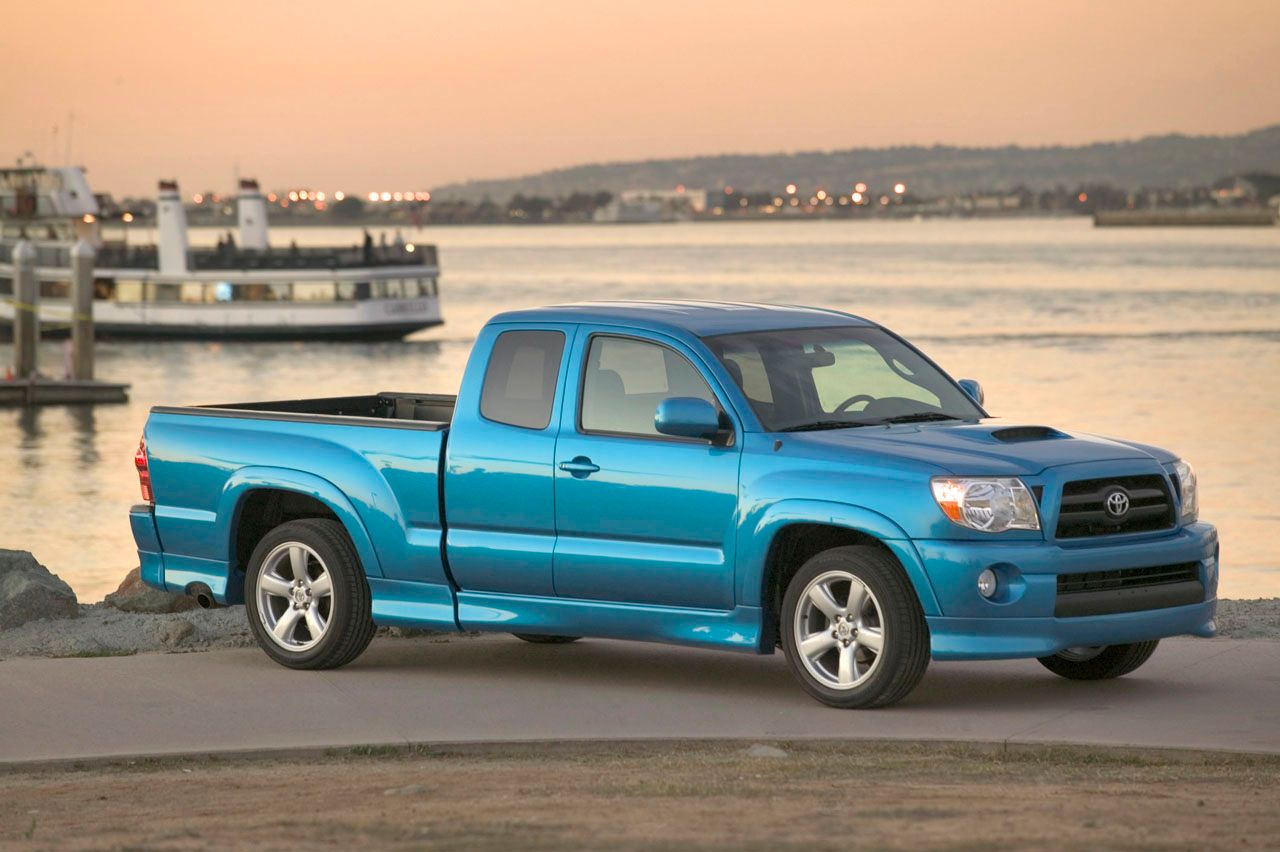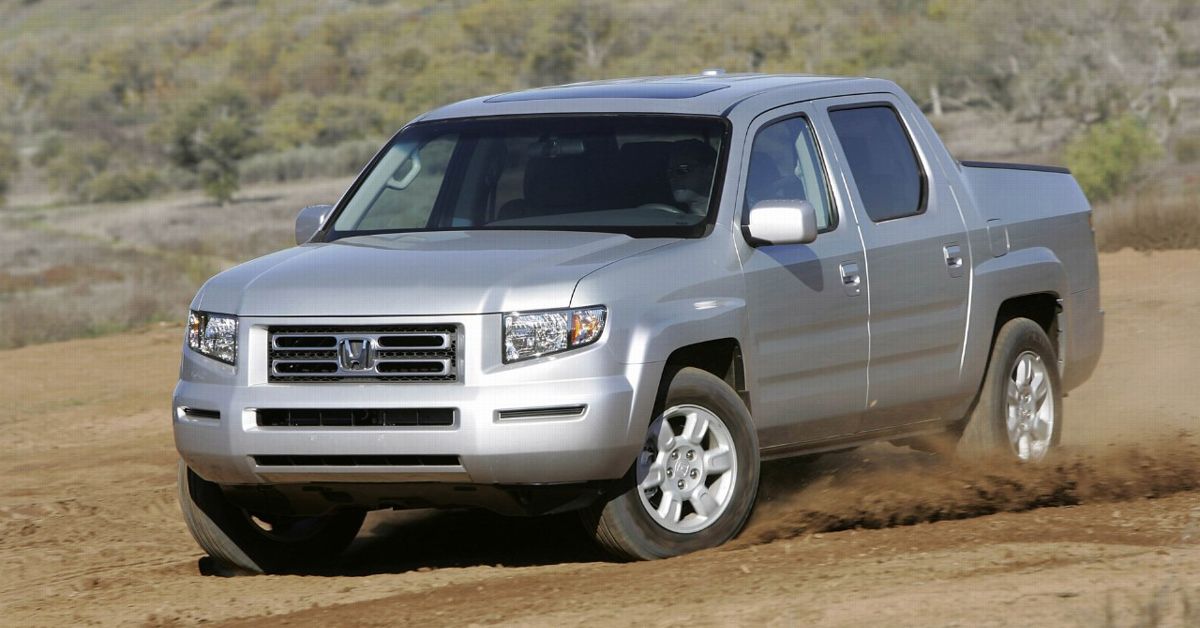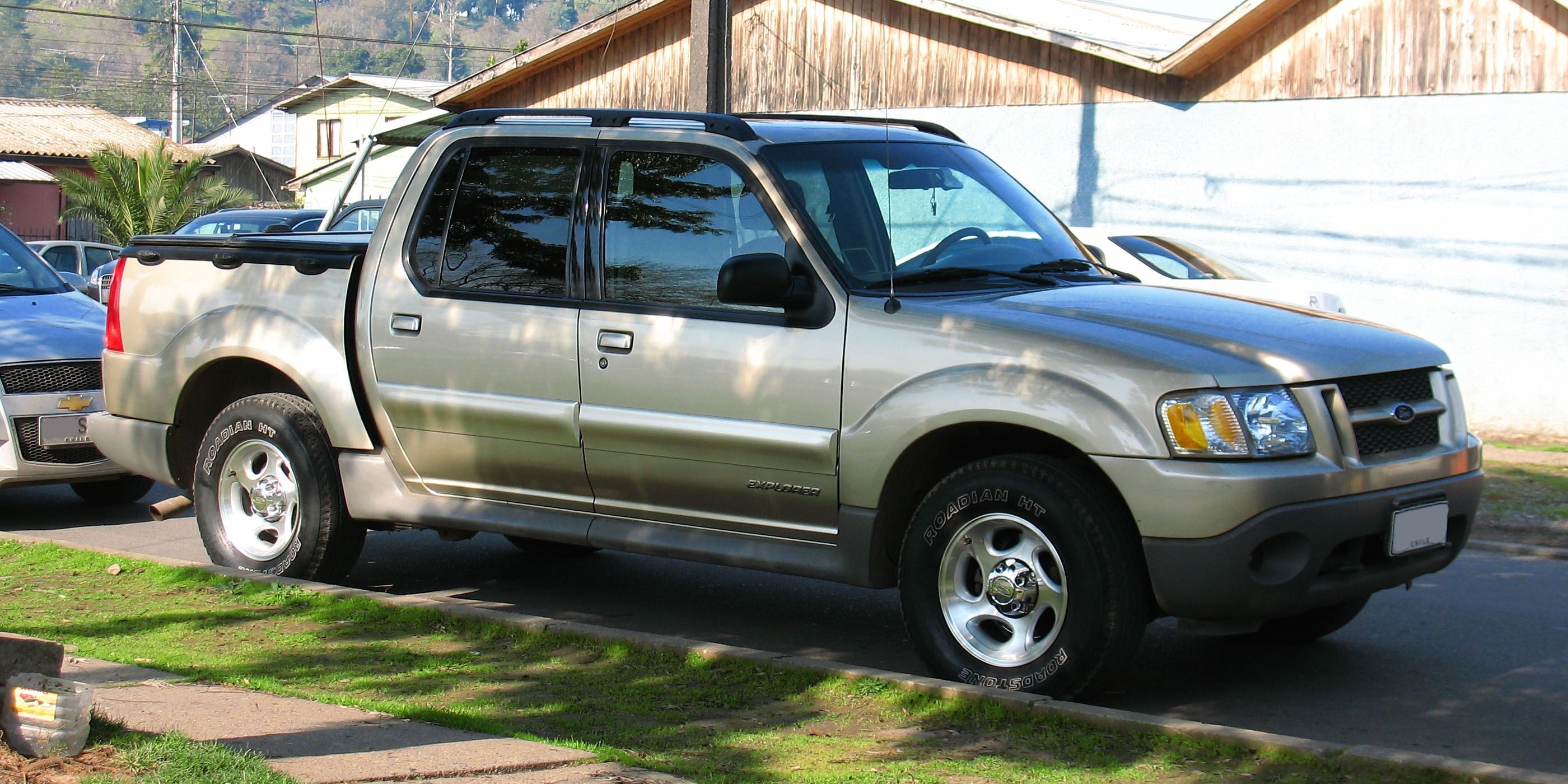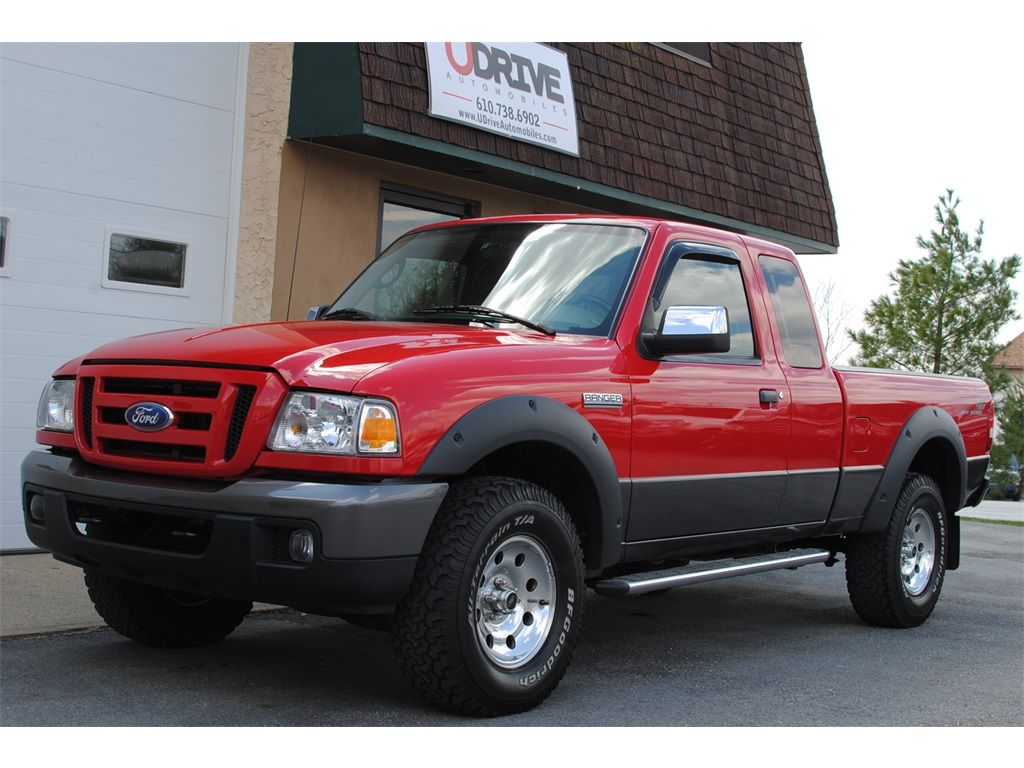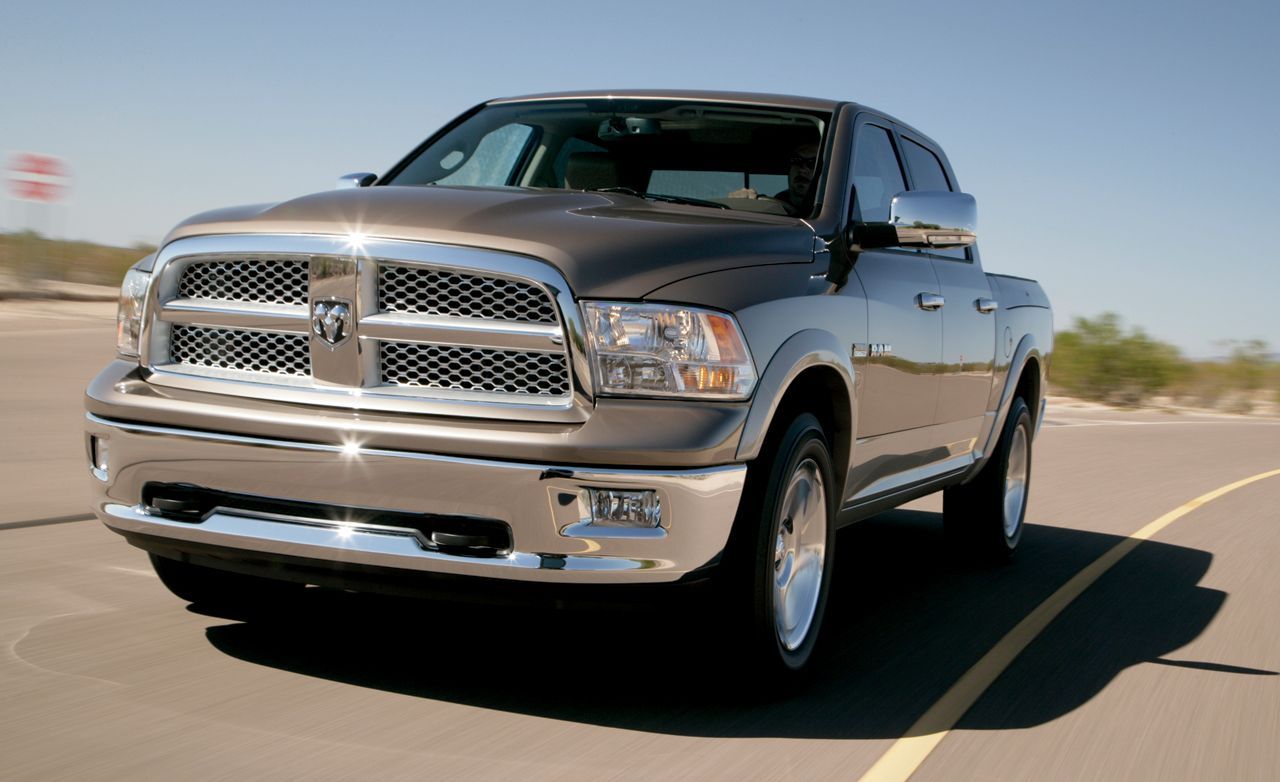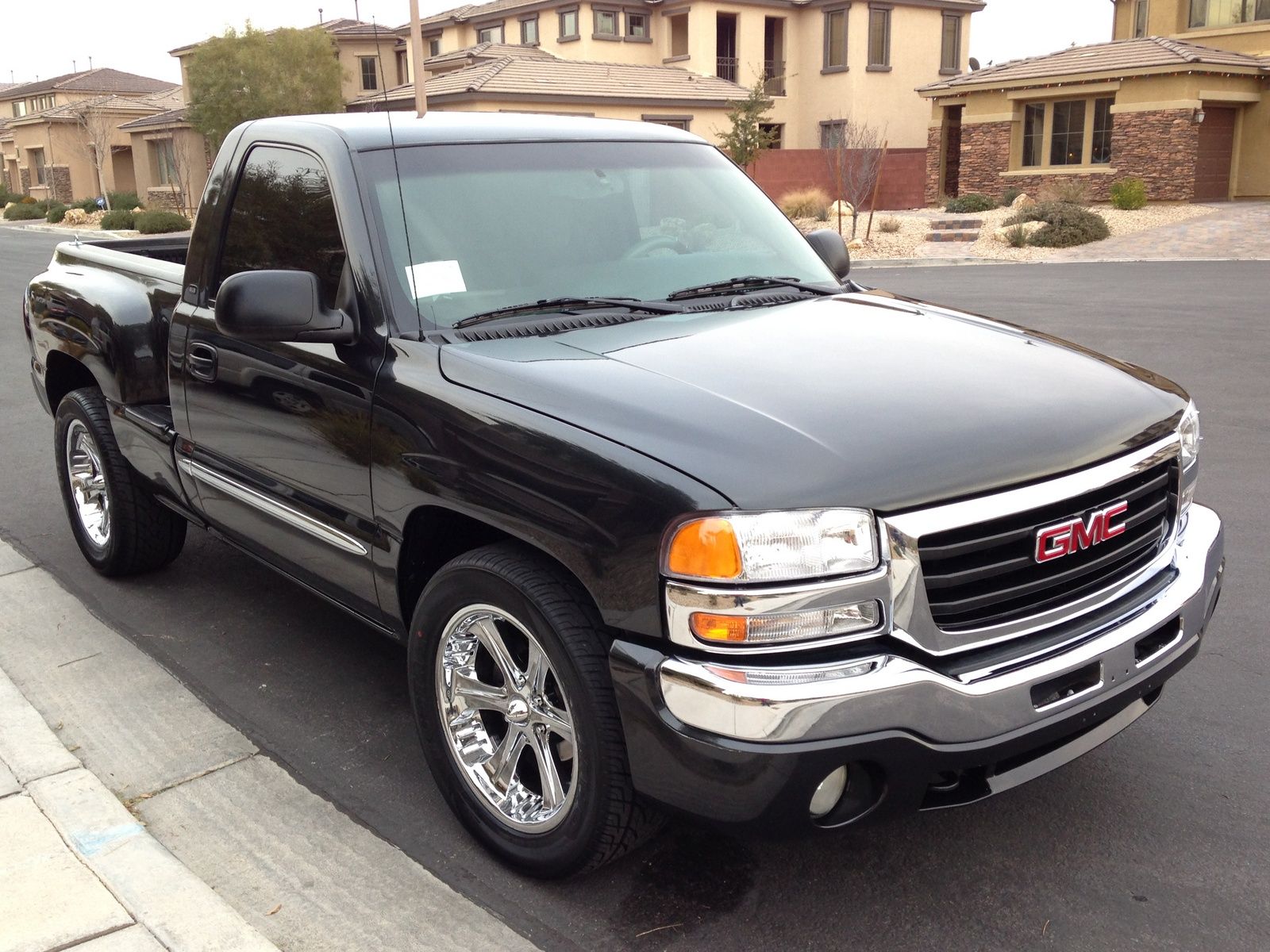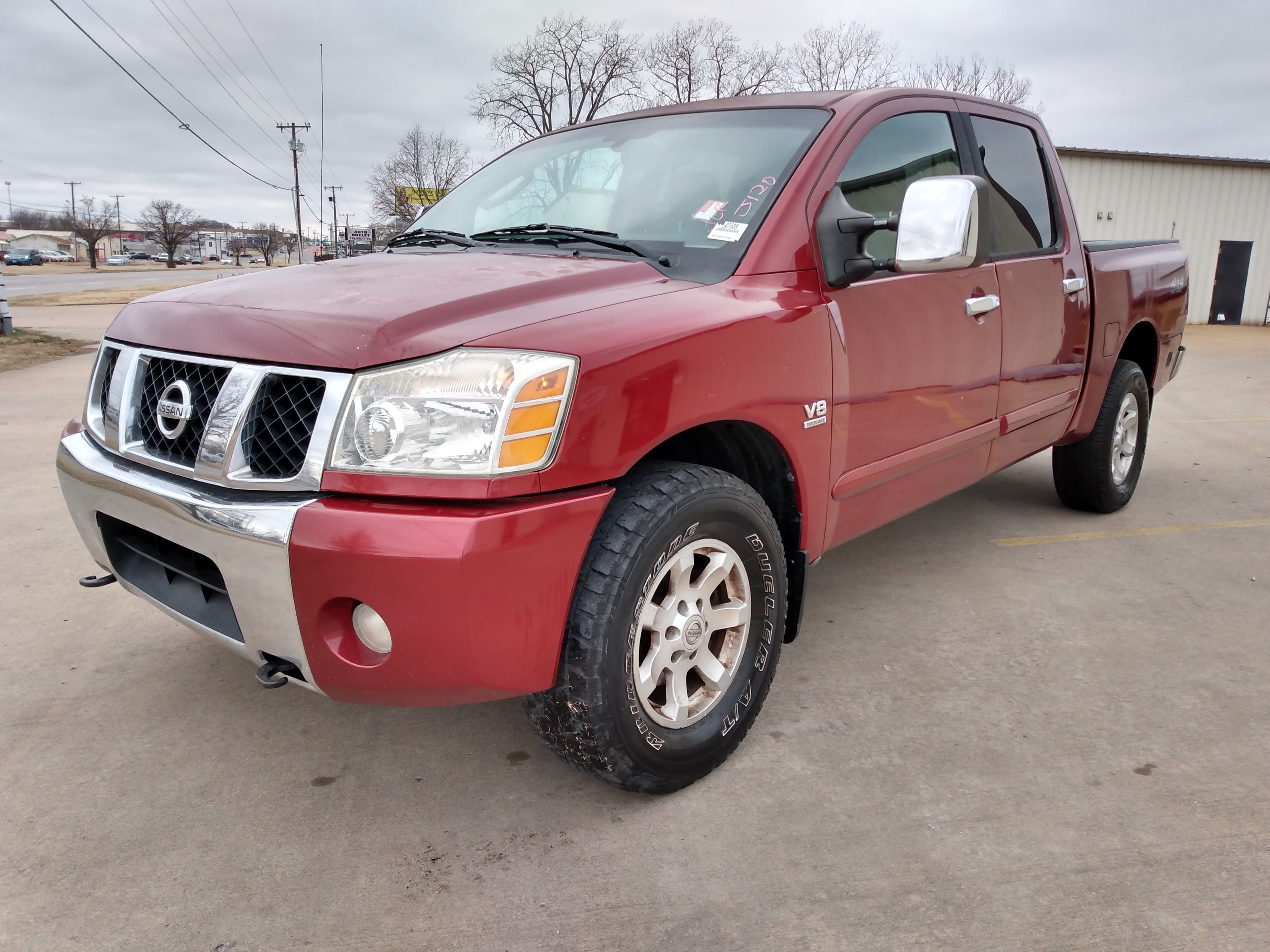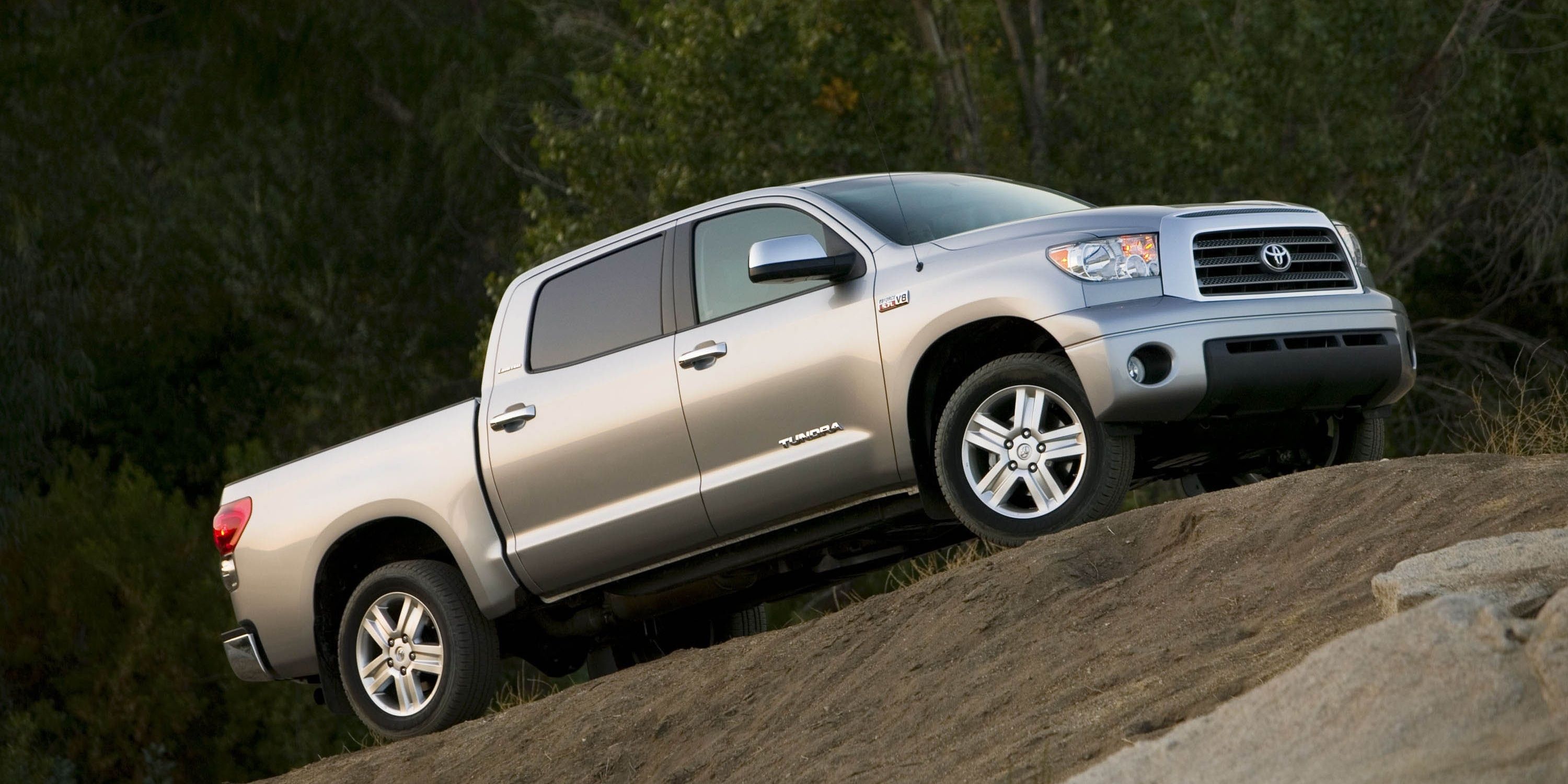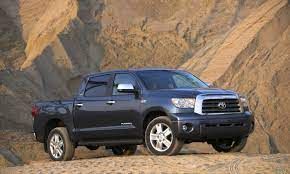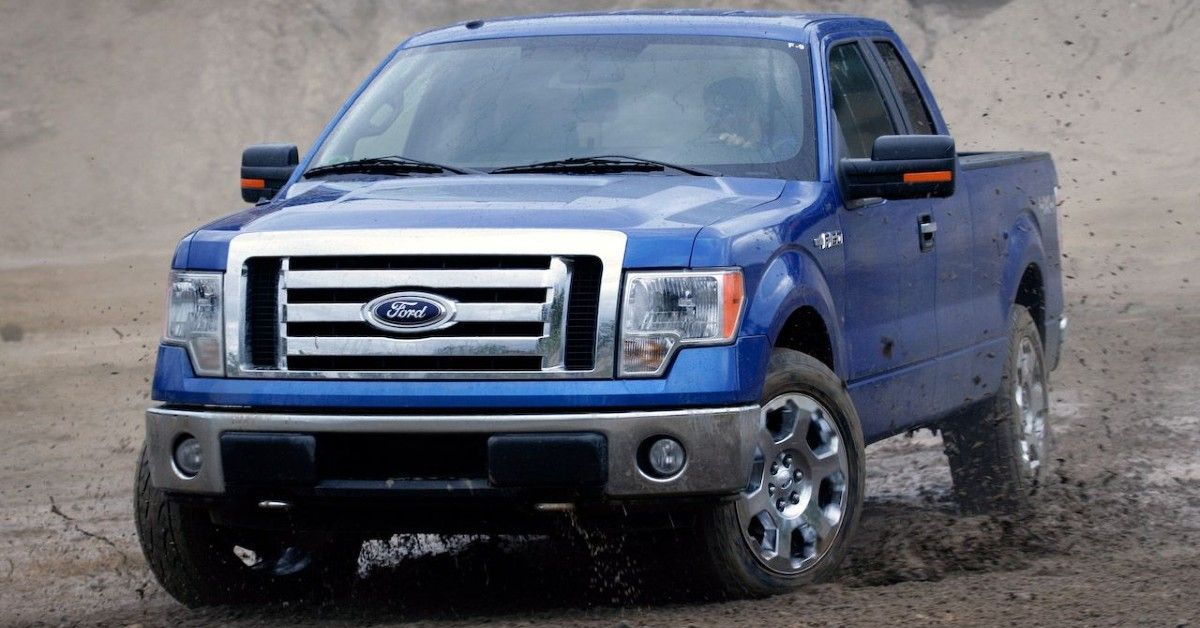Pickup trucks have been pretty much the same for most of the late 20th century. Automakers were still stuck with the tried and tested design language of rugged looks, functional interiors, and a massive power unit at the front. No one imagined that a pickup truck would evolve to include the latest in tech, improved ride comfort, better-looking interiors, and the addition of a luxury trim for some models. That revolution occurred in the 2000s.
With every passing decade of the 21st century, the pickup truck gets reinvented. Here's how the best 2000s pickup trucks on the used market rank.
10 2005 Toyota Tacoma
Reasons To Buy: Different V6 and 4WD Options for Off-roading, Reliability
The Toyota Tacoma has been in production since 1995. Toyota specifically produced this marque for the North American market. The first-generation Toyota Tacoma was built between 1995 and 2004.
In 2000, Toyota introduced the S-RUNNER, which packed a 3.4L V6 engine and a 6-speed manual transmission. The second-generation Tacoma also received a facelift, Toyota adding a revised grille to the marque. The Tacoma has remained the face of Toyota when it comes to high-performance and reliable pickup trucks from the brand. Despite challenges such as the breakup between GM and Toyota after the 2008 financial crisis, the Toyota Tacoma is still in production today.
Pros
- Dependable and long-lasting performance
- Off-road capabilities
- Strong resale value
Cons
- Limited interior space
- Outdated technology
- Average fuel efficiency
9 2006 Honda Ridgeline
Reasons To Buy: Innovative Bed and Storage Features
A faction of gearheads considers the Honda Ridgeline a lifestyle pickup truck. However, this marque still packs a ton of power to be regarded as a capable and noteworthy truck of the 2000s. This pickup truck was first launched into the market in 2005. It is one of two pickup trucks currently being manufactured by Honda.
The 2006 Honda Ridgeline packs an in-bed lockable trunk made available due to the independent rear suspension. That new-age rear suspension replaced the leaf springs a majority of Honda vehicles used at the time. Its design took four years.
Pros
- Versatile bed design
- All-wheel drive capability
- Smooth and comfortable ride
Cons
- Limited towing capacity
- Average fuel efficiency
- Limited off-road capabilities
8 2000-2010 Ford Explorer Sport Trac
Reasons To Buy: Blends SUV and Pickup Features
Ford produced the Ford Explorer Sport Trac from 2000 to 2010. This pickup truck was targeted at the North American market. The Honda Ridgeline was its chief competitor. When Ford announced the Explorer Sport Trac, there was a three-month waitlist for the car. Potential buyers didn’t care how it actually looked or drove.
Thankfully, Ford did not disappoint them. Under the hood, the Ford Explorer Sport Trac packed a 4.0L Cologne V6 engine with a rated output of 210 hp. That engine was mated to a five-speed automatic transmission.
Pros
- Versatile design offering spacious SUV-like cabin for passengers and cargo bed for light hauling
- Comfortable interior
- Capable off-road performance
Cons
- Limited cargo bed size
- Average fuel efficiency
- Mediocre handling
7 2006 Ford Ranger
Reasons To Buy: Compact And Fuel Efficiency
Ford has used the nameplate “Ford Ranger” for 3 different trucks sourced from the company. This marque was introduced in 1983 as the successor to the Ford Courier. Ford didn’t bother to change much on the platform. The Ranger used the same chassis for 29 years. And for that period, it just worked with occasional minimal improvements.
The third-generation Ford Ranger, launched in 2006, received a significant facelift. There was a big difference in exterior styling compared to the previous generation. Under the hood, it packed a 4.0L V6 engine that produced 143 hp.
Pros
- Compact size makes it practical for daily commutes
- Budget-friendly
- Robust construction and long-lasting performance
Cons
- Limited interior space
- Outdated technology
- Rough ride quality
6 2009 Ram 1500
Reasons To Buy: Coil-Spring Rear Suspension And Well-Appointed Interior
The fifth-generation Ram 1500 marked a significant leap for Fiat Chrysler and how it went about building pickup trucks. The 2009 Ram 1500 packed all the goodies a pickup truck enthusiast would want from their half-ton machine.
2009 RAM 1500The Ram 1500 was built to pack more variety, comfort, capability, value, and convenience. Under the hood, it packed a massive power unit with monstrous torque and horsepower outputs. The exterior looked and still looks superb for a truck over a decade old. The same can be said for the interior that Fiat Chrysler put a lot of attention to.
Pros
- Powerful V6 and V8 engine options
- Comfortable and spacious interior with quality materials
- Strong towing and payload capacity
Cons
- Higher fuel consumption especially for city driving and towing heavy loads
- Limited handling and maneuverability in tight spaces
- Limited rear-seat comfort especially in extended cab models
5 2007-2013 GMC Sierra 1500
Reasons To Buy: Powerful V8 Engine Options And Upscale Interior
GMC has been around since 1999. The company solely produces trucks. The 1500 nameplate has been used for lightweight trucks from General Motors. The first-generation GMC Sierra 1500 packed a 6.0L V8 engine that produced up to 325 hp and 370 lb-ft of torque. In 2002, GMC changed the truck’s name to “Sierra Denali.”
In 2007, the Sierra 1500 received a power boost. This model year packed a 6.2L V8 engine that produced 403 hp. The nameplate Sierra 1500 has stuck with this truck to date despite new models coming out every year with greater power and better design.
Pros
- Powerful V6 and V8 engine options
- Comfortable and well-designed interior
- Versatile bed options for different cargo sizes
Cons
- Lower fuel efficiency
- Limited handling and maneuverability
- Outdated technology
4 2008-2015 Nissan Titan
Reasons To Buy: Utili-Track Cargo System
The Nissan Titan stands as one of America’s most powerful pickup trucks ever produced. Its conception and development started as early as 1999. The first model went into the mass markets in 2003.
The Nissan Titan used Nissan’s F-Alpha platform. All models came with a standard 5.6L 32-valve engine with a rated output of 317 hp. The earlier generations were very reliable. They were also packed with a ton of luxury and tech features that you wouldn’t find in other pickup trucks at the time, such as a DVD player with a screen, hands-free Bluetooth stereo, and side airbags.
Pros
- Powerful V8 engine
- Spacious and comfortable interior
- Impressive towing capacity
Cons
- Limited bed configurations
- Interior design with less upscale materials
- Limited trim and feature options
3 2007 Toyota Tundra
Reasons To Buy: Durability and Long-Lasting Performance
Toyota engineers its vehicles with reliability in mind. It’s willing to go as far as sacrificing comfort just to make sure the car can survive any form of abuse. That is why the Toyota Tundra has been a force to reckon with since its launch in 1999. This marque ushered the new millennium in style and has continued production ever since.
Under the hood, the Tundra packs a base 3.4L V6 engine used in first-generation models. The 2007 model was a significant leap forward in power, reliability, and comfort.
Pros
- Powerful V6 and V8 engine options
- Comfortable interior with supportive seats
- Impressive towing and payload capacity
Cons
- Large size makes it harder to maneuver in tight spaces
- Limited bed configurations
- Outdated technology
2 2008 Toyota Tundra
Reasons To Buy: CrewMax Cab Configuration, Toyota Safety Sense
The 2008 Toyota Tundra also stands as one of the most remarkable pickup trucks produced in the 2000s. According to most critics, this is the Tundra that finally let Toyota punch in the same weight as American heavyweights.
Toyota invested time, money, and all other resources in the production of the 2008 Toyota Tundra. The company invested billions in building a new state-of-the-art manufacturing plant in San Antonio, Texas. The 2008 Tundra came with three different powertrains, one V6, and two V8s, with the top-of-the-line 5.7L V8 packing monstrous levels of power and torque.
Pros
- Powerful V6 and V8 engine options
- Equipped with a range of safety features
- Off-road capability (TRD models)
Cons
- Interior design and materials feel dated compared to competing trucks
- Limited rear-seat comfort
- Limited bed configurations
1 2009 Ford F-150
Reasons To Buy: BoxLink Cargo System, Ford SYNC Infotainment System
The 2009 Ford F-150 was launched at a tough time. Fuel prices skyrocketed, the economy sank, and consumer confidence went with the wind. Consumers who’d be interested in these gas-guzzling machines were now looking for something leaner. However, just like the tank it’s built to be, the 2009 Ford F-150 survived the onslaught.
It came packed with a fully boxed chassis to provide best-in-the-class rigidity, a monstrous payload capacity of up to 3030 pounds, and a tow rating of 11,300 pounds. To show that they were fully aware of emerging consumer concerns, Ford launched a new 5.4L V8 with the 2009 F-150, 12% more efficient.
Pros
- Versatile V6 and V8 engine options for different power and fuel efficiency needs
- Off-road capability (FX4 trim)
- Strong brand reputation
Cons
- Limited rear-seat space in some cab configurations (Regular Cab models)
- Potential reliability issues (related to electrical systems and transmission)
- Limited off-road capability in base trims

